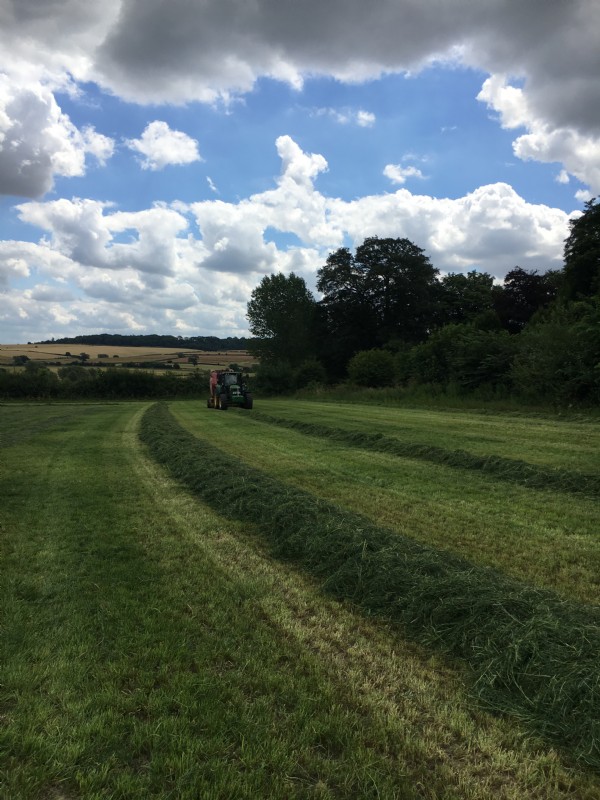

The slow, cold and extremely dry spring has caused some spring sown reseeds to struggle this year in parts of the UK. The lack of moisture and the slow establishment of the sown species has reduced the competition against weeds, giving them more room to grow than usual and as a result we’ve seen flushes of spring germinating broadleaf weeds such as redshank and fat hen.
One method of cultural control to deal with these annual weeds is to cut the leys once the new grass and clover seedlings are established enough to withstand a pass with the mower or flail. The plants should have enough root development so that if they are pulled up by the stem they do not come away from the soil with the roots intact, but break off halfway up the plant.
Below, you can see customers in Oxfordshire taking a light silage cut to deal with any annual weeds within long term grazing and cutting leys - Pochon and permanent grass. The cut will also encourage the sown species to tiller out and thicken up the base of the sward.
Alternatively, for a quicker operation, areas of weeds can be topped, flailed or lightly grazed with livestock. Sheep do a particularly good job of grazing quickly and evenly, often referred to as the ‘Golden Hoof’, and can moved from field to field with temporary electric fencing.
Date Posted: 11th July 2017



